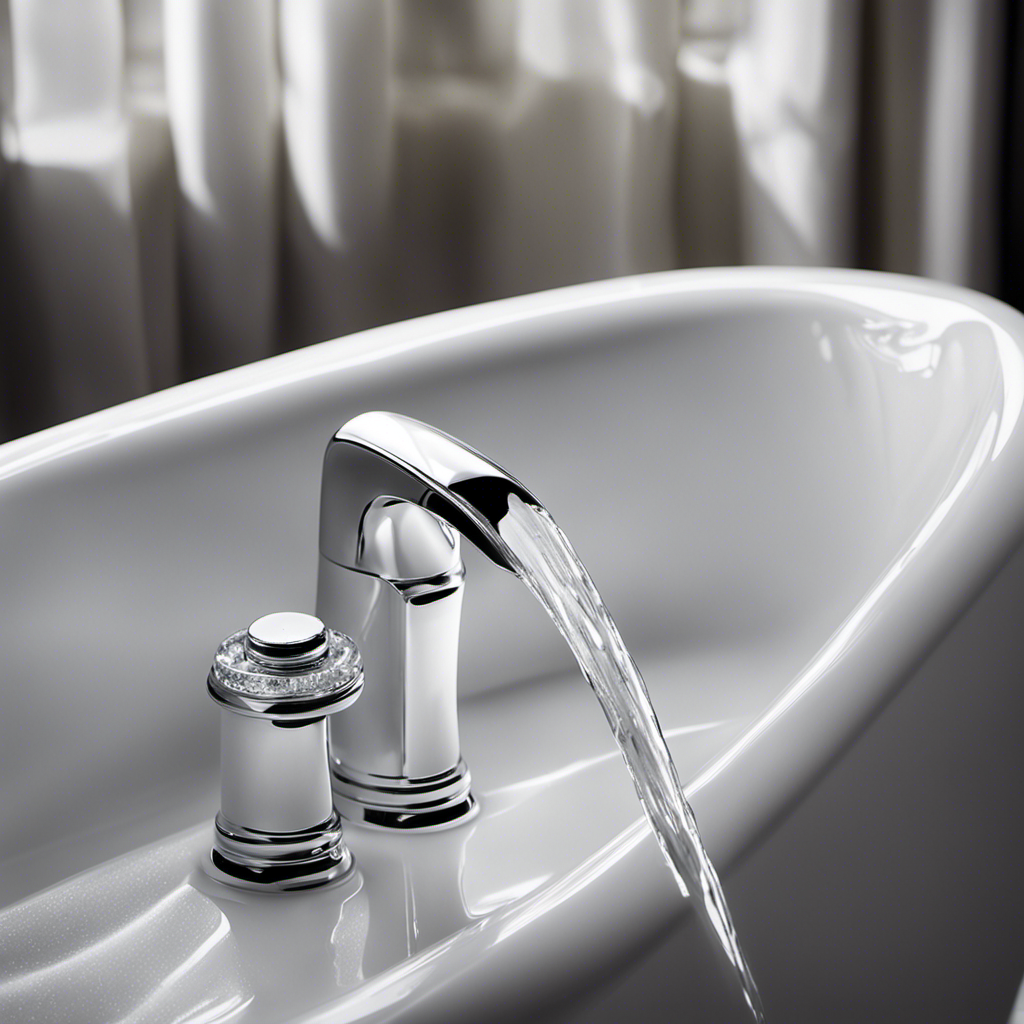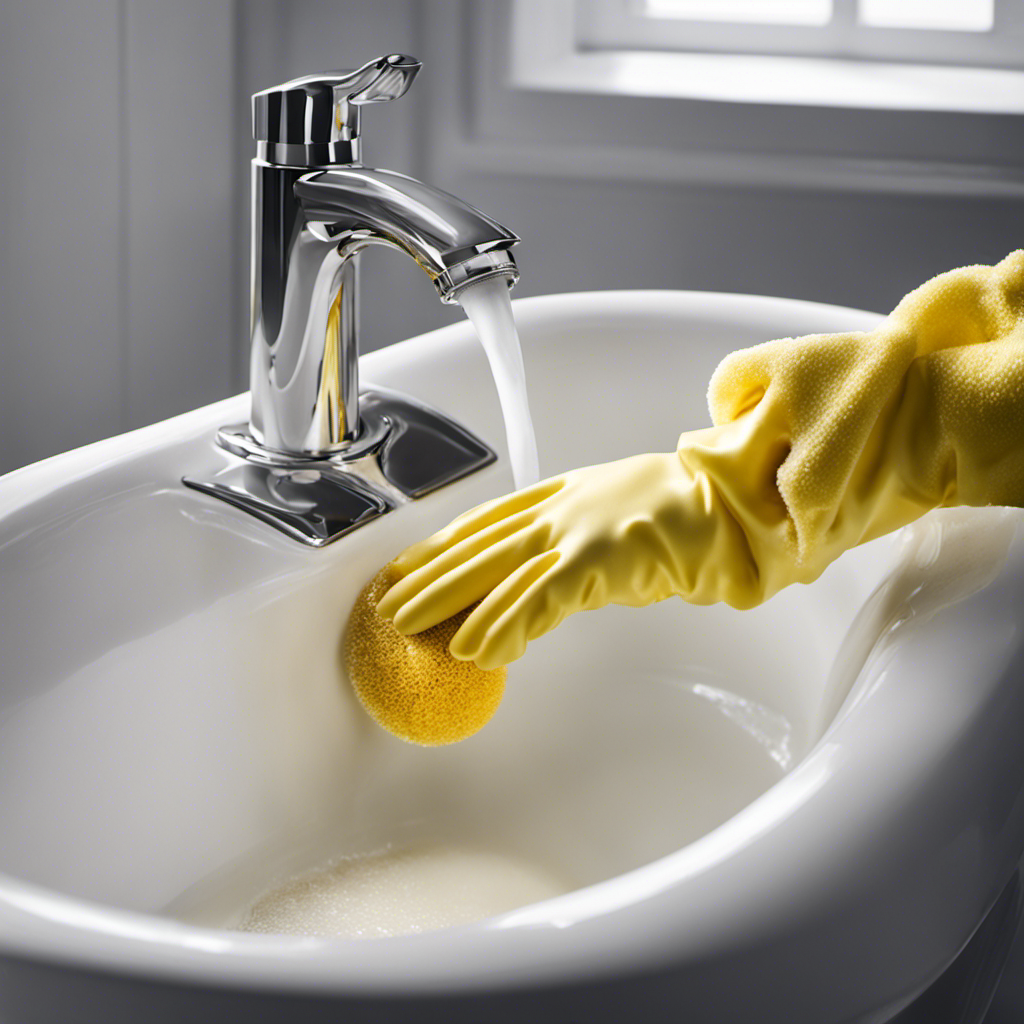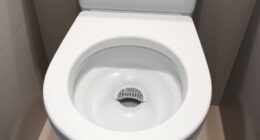As a homeowner, I have experienced the frustration of a leaking bathtub faucet. It’s like a constant drip-drip-drip, a tiny waterfall that won’t stop.
But fear not, fellow DIY enthusiasts! In this article, I will guide you through the ins and outs of identifying and fixing a leaky bathtub faucet. With a few simple steps and the right tools, you can put an end to that annoying drip and restore peace to your bathroom oasis.
Let’s dive in!
Key Takeaways
- A leaky bathtub faucet can be caused by worn-out rubber seals or brittle and cracked seals.
- It is important to regularly inspect and promptly repair a leaky bathtub faucet to prevent water wastage and high water bills.
- To fix a leaky bathtub faucet, you should turn off the water supply valve, remove the handle, inspect the cartridge for wear or damage, and replace worn-out O-rings.
- To prevent future leaks, regularly inspect and tighten loose connections, clean the aerator, check and replace worn-out washers and O-rings, and lubricate moving parts with silicone-based grease.
Common Causes of a Leaky Bathtub Faucet
One of the most common causes of a leaky bathtub faucet is worn-out rubber seals. Over time, these seals can become brittle and cracked, allowing water to seep through and create a leak. Signs that indicate a need for bathtub faucet repair include dripping water, a constant stream of water, or a faucet that won’t turn off completely.
To fix this issue, there are a few possible solutions. Firstly, you can replace the rubber seals with new ones. This can be done by removing the handle and then unscrewing the valve stem assembly.
Another solution is to replace the entire faucet cartridge. This involves removing the old cartridge and installing a new one. Both of these solutions should effectively stop the leak and restore the proper functioning of your bathtub faucet.
How to Identify a Leaky Bathtub Faucet
To identify a leaky bathtub faucet, start by checking if water is dripping when the handle is in the closed position. This is a common sign of a leak and should not be ignored.
A leaky faucet can lead to significant water wastage, which can have a direct impact on your water bills. Even a small drip can add up over time, resulting in hundreds of gallons of wasted water. Not only does this waste valuable resources, but it also affects your budget.
Identifying and fixing a leaky faucet is essential to conserve water and save money. Regularly inspecting your faucets for leaks and promptly repairing them can help reduce water wastage and keep your water bills in check.
Steps to Fix a Leaky Bathtub Faucet
If you’re experiencing a leaky bathtub faucet, start by turning the water supply valve to the closed position. This will prevent any further water from flowing and allow you to work on fixing the issue.
Here are the steps to fix a dripping bathtub faucet:
-
Remove the handle: Use a screwdriver or Allen wrench to remove the handle from the faucet.
-
Inspect the cartridge: Check for any signs of wear or damage on the cartridge. Replace it if necessary.
-
Replace O-rings: If the O-rings are worn out, remove them and replace them with new ones.
-
Clean the valve seat: Use a cloth and some vinegar to clean the valve seat and remove any mineral deposits.
-
Reassemble the faucet: Put everything back together in the reverse order and test the faucet to ensure it’s no longer dripping.
Tools and Materials Needed to Repair a Leaky Bathtub Faucet
When fixing a leaky bathtub faucet, you’ll need a few tools and materials. To start, gather a pair of pliers, an adjustable wrench, a screwdriver, and a replacement cartridge or washer, depending on the type of faucet you have. Additionally, have a rag or towel handy to soak up any water that may leak during the repair.
It’s important to troubleshoot the leaks before proceeding with the repair. Check for any loose connections or worn-out parts that may be causing the issue. Once you have identified the problem, you can confidently begin the repair process.
By following these steps and using the right tools, you’ll be able to fix your leaky bathtub faucet in no time.
Now let’s explore how to prevent future leaks in your bathtub faucet.
Preventing Future Leaks in Your Bathtub Faucet
One way to avoid future leaks in your bathtub faucet is by regularly inspecting and tightening any loose connections. Proper maintenance is essential for the longevity of your bathtub faucet and to prevent costly repairs or replacements. Here are some tips to extend the lifespan of your bathtub faucet:
- Clean the aerator regularly to remove mineral deposits and debris that can cause blockages.
- Check the washers and O-rings for signs of wear and tear, and replace them if necessary.
- Lubricate the moving parts of the faucet with silicone-based grease to prevent friction and corrosion.
- Avoid using excessive force when turning the handles to prevent damage to the internal components.
- Consider installing a water softener to reduce mineral buildup and extend the lifespan of your faucet.
Conclusion
In conclusion, fixing a leaky bathtub faucet is a relatively simple task that can save you money and prevent water waste. By following the steps outlined in this article and using the necessary tools and materials, you can successfully repair your faucet and prevent future leaks.
Did you know that a leaky faucet can waste up to 3,000 gallons of water per year? That’s enough to fill a swimming pool! So don’t delay, take action and fix that leaky faucet today. Your wallet and the environment will thank you.










